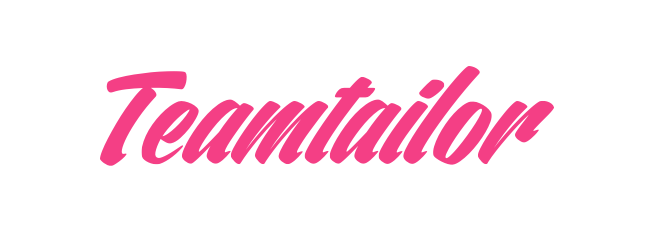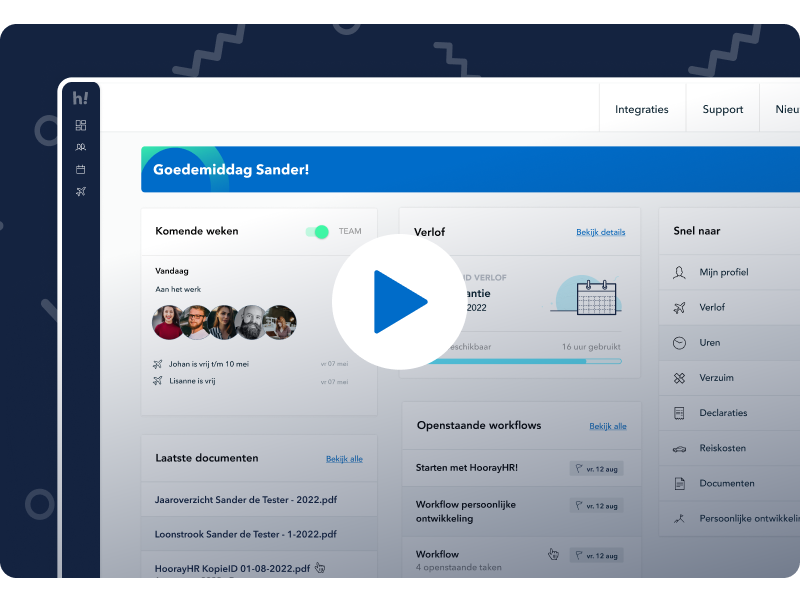What does an onboarding process look like?
Table of contents
New employees starting out at a company will have many questions. They’ll probably ask about their position, coworkers, the team and the company itself. The employees get started on new tasks and get to know the organisational culture. All of this is involved in the onboarding process of new employees.
The idea behind an onboarding process is that you prepare your new employees as quickly as possible and in the best possible way. You’re responsible for their development in this stage and help them through every step. The onboarding process is not just created so new employees can get to know their tasks and the company, but it’s also about building a connection between you and the employee.
The length of the onboarding process
Every onboarding process is different. Not every employee needs the same amount of time to be onboarded. Based on their position, the onboarding process is usually between four and eight weeks. The processes from the onboarding process will become daily tasks and employers want to have finished a couple long-term processes by the end of this time. The employee won’t need constant support anymore, but will commit themselves towards taking care of their own tasks.
It’s important to highlight the company’s processes at the right moment during the onboarding process of the new employee. Let the employee get to know the company processes and what is involved. You can use onboarding software to plan and complete these tasks. HoorayHR offers an onboarding to to streamline this process. You can use workflows to have tasks lined up for the employee so you can onboard them without losing time!
Discover Workflows!
Creating an onboarding process
When creating an onboarding process you need to divide it into the following four phases:
- Before the first day at work
- The first day at work
- Evaluation
- Review
1. Before the first day at work
As an HR manager, employer or supervisor, you would like to contribute to new colleagues feeling at home quickly and being able to start work independently. The goal is to streamline the entire onboarding process and make it successful.
Make sure that all formalities are taken care of. Have all contractual agreements been fulfilled and is the contract signed or ready to be signed? Does the employee have access to all software and are any uniforms available for the new employee? It is important to take this into account at an early stage, at least two weeks before the employee starts.
Make appointments with the new employee and involve colleagues in the process. Make sure that the employees can welcome the new employee, so that a good first impression is immediately made by the team.
Finally, it is important that the workplace is fully equipped so that the employee can start working right away!
2. The first day at work
On this day, you follow up on the onboarding. You and your colleagues get to know the new employee and it is very important that you, as the one responsible, show your recognition. This is not just about giving compliments, it is also important that you are available on time to welcome the new employee. It happens very often that the new employee arrives on time, while the person in charge is still on the road or not available.
Get to know the team!
Organise a small-scale introductory meeting with the team or the entire company. This way everyone gets to know the new employee at the same time, after which there is time to get to know each other better. It takes a little time from the colleagues, but we guarantee you that it will improve the productivity of the team in the long run!
You could also choose to plan a team building activity right away. Organising a joint lunch strengthens the solidarity within the organisation. Another advantage is that it immediately creates a basis of trust for working together in the future.
Introducing an employee
With HoorayHR you can easily create tasks for the employee. An important task for you and the new employee is the introduction to the team. Does the employee meet their colleagues in person, or do you as an employer choose to make an announcement via e-mail first? We are happy to give you some tips for writing a good welcoming e-mail.
3. Evaluation
When the onboarding process has been completed and the new employee starts working on their own projects within the organisation, it is wise to schedule regular evaluations. During these evaluations a bond of trust is created and the past period is evaluated.
Do mention the negative points and give feedback, but primarily bring up the positive contributions. With the help of personal development of HoorayHR you contribute to a healthy organisation. With the help of the growth tools it is possible to set goals and link a report to this.
Focus on the growth of your people, to have your organisation flourish!
4. Review
In the review, we look back upon the onboarding process. Which processes have been gone through that the employee now benefits from greatly? Discuss the onboarding process with your employee and what the possible points of improvement are. It is also important to know what the employee experienced as pleasant. This way, you as an employer can continue to optimise the onboarding process. Both in the basis of your templates, and in practice when you are interviewing new applicants and applicants who are hired.
Disclaimer
Important! Our articles and posts on our website are intended for information purposes and are not binding. They do not constitute full legal advice and are only provided to share information about specific HR topics. The content of this article is not intended to replace binding legal advice that will apply to your specific situation.




